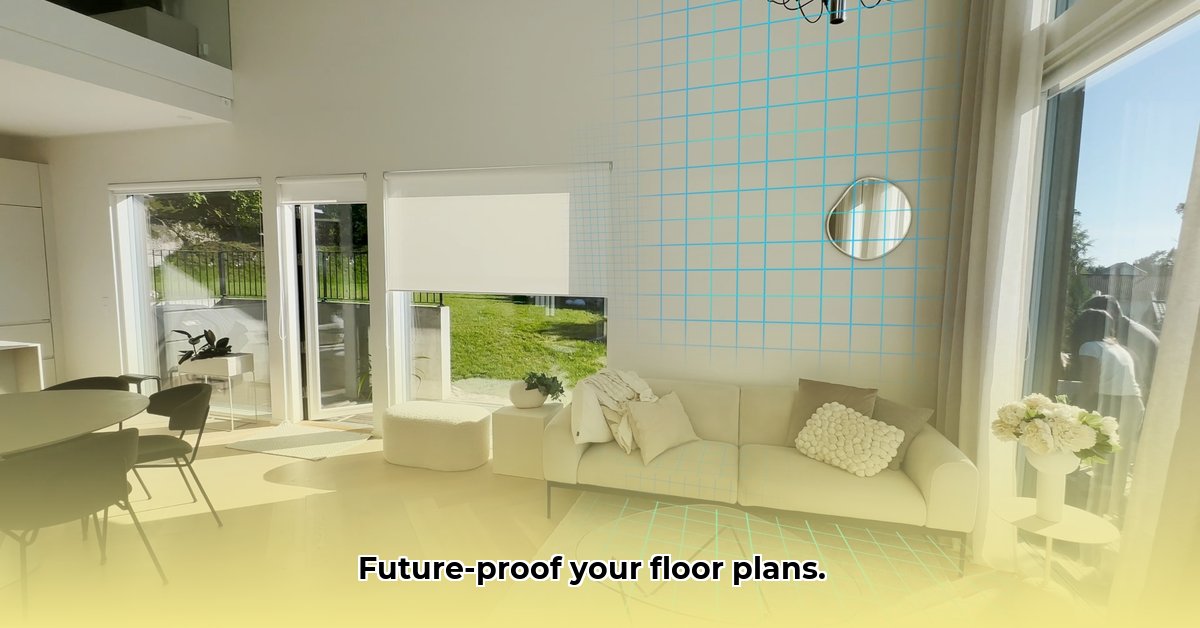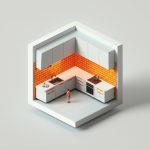Thinking about a home makeover, building your dream house, or selling a property? Picking the right software to create an interactive floor plan can make the whole project way easier, enhancing visualization and minimizing design errors. There are tons of options out there, so it can be tricky to know where to start. For free options, check out free floor plan creators. This guide is here to help you find the perfect interactive floor plan tool for your needs, whether you’re a DIYer on a budget or a pro needing powerful features. We’ll break down the best software, show you what features to look for, and help you choose the one that’s right for you, so you can get started on designing your amazing space – and avoid any costly mistakes along the way!
Interactive Floor Plan Software: 2025’s Top Choices
Planning a home renovation, designing a dream house, or staging a property for sale? Interactive floor plan tools can make the process a breeze. But with so many options available, choosing the right one can feel overwhelming. This guide will help you navigate the world of these digital design helpers, making your choice simpler and more effective.
Defining Your Project Needs
Before jumping into software comparisons, consider your project’s scope. Are you a homeowner tackling a small bathroom remodel? A real estate agent preparing listings? Or an architect working on a large-scale commercial building? The complexity of your project will determine the features you need. A simple home upgrade probably doesn’t require the advanced 3D modeling found in professional-grade programs. The right tool should align with the scale and intricacy of your design endeavor.
Essential Features: What to Look For
When comparing different interactive floor plan tools, consider the following:
-
2D vs. 3D: Most programs offer basic 2D layouts, but 3D modeling allows you to virtually walk through your design. This “virtual walkthrough” can help you catch potential problems early. If you’re happy with simple 2D, you can save money and complexity by avoiding 3D options.
-
Ease of Use: Some programs are intuitive, while others require technical skills. Assess your tech abilities; a complex program might be frustrating to learn, while a simpler program might limit an ambitious designer. Look for features like drag-and-drop functionality and pre-built templates to get started quickly.
-
Collaboration: If you’ll be working with contractors, clients, or colleagues, choose software that allows easy sharing and real-time collaboration. Being able to share updates easily ensures everyone is on the same page.
-
Furniture Libraries: Many programs include libraries of furniture and fixtures, allowing you to visualize the placement, scale, and overall arrangement of furniture.
-
Customization Options: The ability to customize elements like wall thickness, door and window styles, and flooring materials allows for a more accurate representation of your design.
-
Export Options: Ensure the software exports in formats compatible with other commonly used design software.
-
Pricing Models: Options include completely free (often with basic functionalities), freemium (free core version, with paid upgrades for enhanced features), and subscription-based (paid monthly or yearly access).
Top Interactive Floor Plan Tools: A Detailed Comparison
Here’s a look at some of the leading interactive floor plan tools available in 2025:
| Software | 2D/3D | Ease of Use | Collaboration | Key Features | Pricing Model | Targeted User |
|---|---|---|---|---|---|---|
| Floorplanner | 2D/3D | Easy | Yes | Intuitive interface, large furniture library, realistic 3D rendering, team collaboration features, integration with virtual reality headsets | Freemium | Homeowners, Real Estate Agents, Interior Designers |
| Planner 5D | 2D/3D | Easy | Yes | User-friendly interface, extensive catalog of furniture and decor, snapshot function to capture designs, AR-powered room measurement, design contests, interior design ideas and inspiration feed | Freemium | Homeowners, DIY Enthusiasts, Students |
| SketchUp | 2D/3D | Intermediate | Yes | Advanced 3D modeling, customizable components, extensive plugin library, photorealistic rendering, BIM capabilities, AR/VR viewing | Freemium/Paid | Architects, Designers, Engineers, Construction Pros |
| RoomSketcher | 2D/3D | Easy | Yes | Easy-to-use interface, 3D visualization, floor plan drawing, home design and remodeling, furniture planning, real estate marketing, virtual staging and 3D floor plans | Paid Subscription | Homeowners, Real Estate Agents, Interior Designers |
| Sweet Home 3D | 2D/3D | Easy | No | Free and open-source, furniture catalog, 3D view, import existing home blueprints, video creation, plugin support, virtual visit | Free | Homeowners, Beginners, Students |
| SmartDraw | 2D | Easy | Yes | Template-driven design, automatic formatting, data integration, team collaboration features, integration with MS Office, CAD compatibility | Paid Subscription | Business Users, Project Managers, Facility Managers |
| Cedreo | 3D | Easy | Yes | Fast 3D rendering, automated design assistance, pre-designed templates, easy collaboration features, client presentation tools, customizable product catalogs | Paid Subscription | Home Builders, Remodelers, Interior Designers |
| Canva | 2D | Easy | Yes | Drag-and-drop interface, extensive library of design elements, collaboration features, presentation tools, social media integration, free templates, team sharing options | Freemium/Paid | Beginners, Students, Social Media Marketers |
Selecting the Right Software: Matching Tools to Your Needs
For small-scale home projects, a free or freemium option like Planner 5D or Floorplanner might be suitable. These often provide a good balance of easy use and basic features. For professionals needing advanced features, collaboration tools, and robust export options, investing in paid options such as SketchUp or RoomSketcher is a better choice. The right tool fits your project’s demands and your comfort level with technology.
Tips and Tricks for Success
Interactive floor plan software can revolutionize your design process, making it faster, easier, and more enjoyable. Share your plans with contractors instantly, confirm furniture placement visually, and explore numerous design layouts – all without a single hand-drawn sketch!
Mastering any software takes time and effort. Utilize available tutorials and online communities, and experiment. Practice makes perfect! Back up your work regularly to avoid data loss.
The world of interactive floor plan tools offers something for everyone. By considering your needs and exploring the available options, you can find the perfect tool to bring your design vision to life.
Choosing Floor Plan Software for Architectural Design Projects
Finding the perfect floor plan software can be challenging. How do you choose the right tool for your architectural design projects? This guide breaks down the process, helping you navigate the market and select software that best meets your needs.
Evaluating Your Project Requirements
Before diving into software comparisons, assess your requirements. Are you a seasoned architect needing precision tools, a DIY enthusiast tackling a home renovation, or a real estate agent needing quick, visually appealing renderings? These needs will influence your software choice. Consider these factors:
-
Project Complexity: Simple room layouts need less powerful software than intricate, multi-story designs. The level of detail needed will determine the complexity of the software required.
-
Budget: Free options exist, but professional-grade features often come with subscription fees. Be aware of long-term costs and potential hidden fees.
-
Technical Skills: Some programs are intuitive; others require a steeper learning curve. Factor in training time and the availability of support resources.
-
Collaboration Needs: Do you need a tool that enables seamless teamwork? Consider the number of users and the need for real-time co-editing.
-
Integration: Will the software need to integrate with other tools like CAD software, BIM platforms, or project management systems?
Leading Software Platforms: A Comparison
Several platforms dominate the market, catering to various user groups:
| Software | Best For | Key Features | Pricing Model | Platform Support |
|---|---|---|---|---|
| SketchUp Pro | Architects, Professional Designers | Precision modeling, extensive customization, large component library, advanced rendering capabilities, BIM integration, AR/VR viewing | Subscription, One-time License | Windows, macOS, Web |
| AutoCAD Architecture | Architects, Engineers | Industry-standard CAD features, building information modeling (BIM) tools, parametric design, automated documentation, collaboration features, extensive libraries | Subscription | Windows |
| Revit | Architects, Engineers, Contractors | Building Information Modeling (BIM), parametric modeling, collaborative design, automated documentation, clash detection, energy analysis | Subscription | Windows |
| Cedreo | Home Builders, Remodelers, Interior Designers | Fast 3D rendering, automated design assistance, pre-designed templates, easy collaboration features, client presentation tools |
- Modern Kitchen Backsplash Ideas To Inspire Your Refresh - December 19, 2025
- Modern Backsplash Ideas: A Guide to Todays Kitchen Trends - December 18, 2025
- Ceramic Kitchen Wall Tiles: Style and Protection for Your Walls - December 17, 2025









